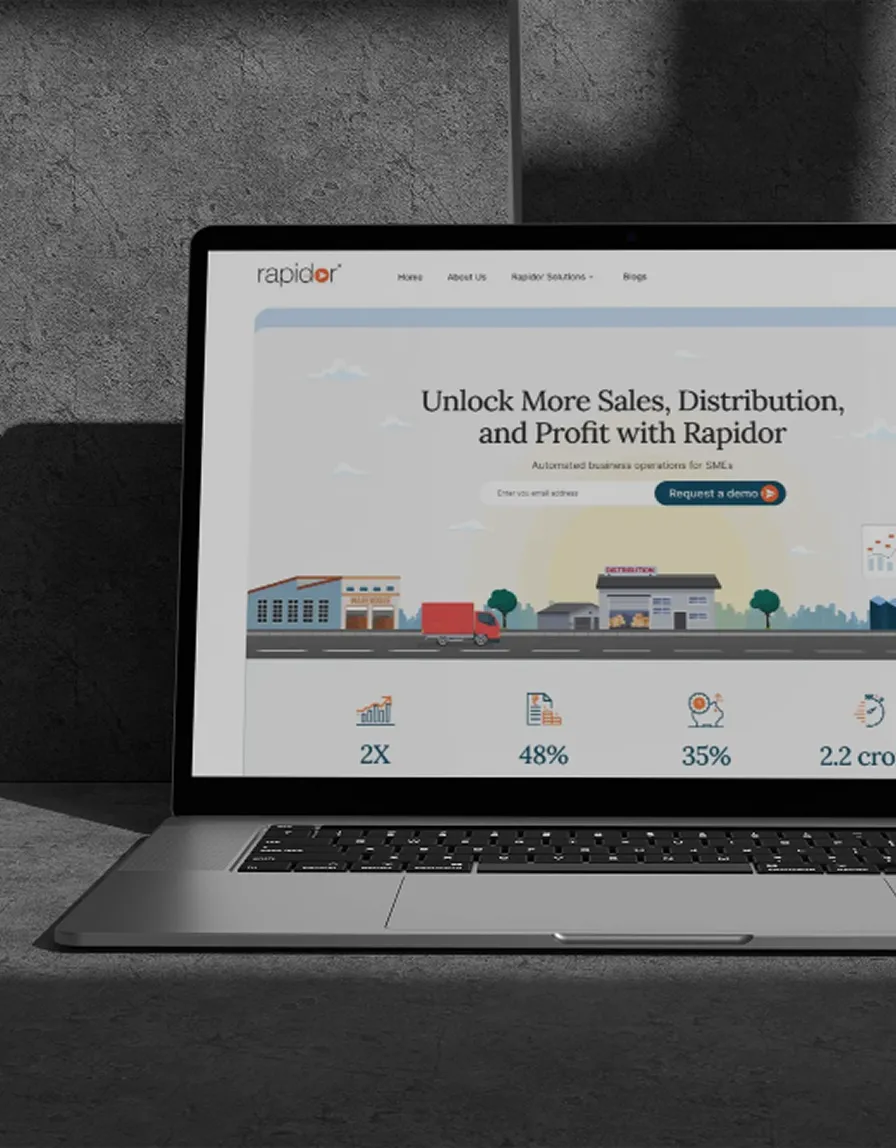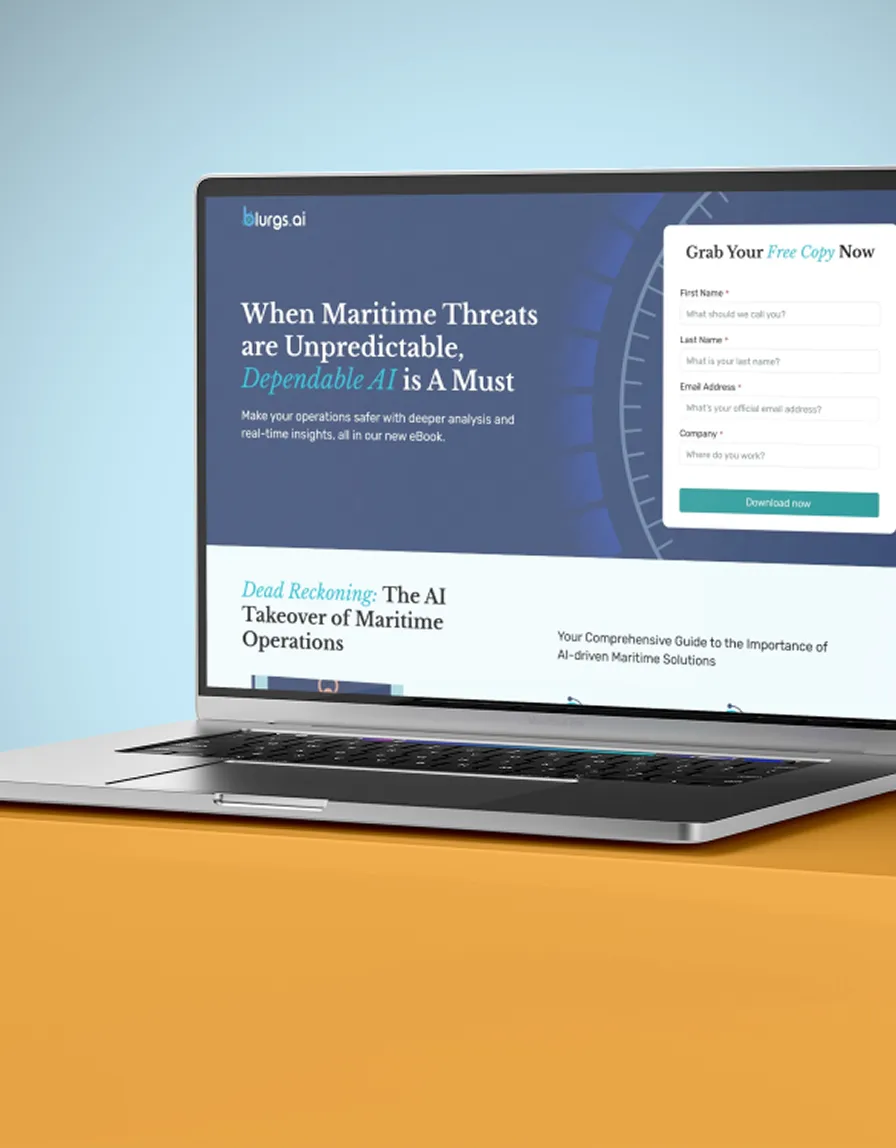The right positioning turns demos into decisions.












































































































































Strategic narrative that rewrites buyer expectations
Commercialized product thinking in every go-to-market motion
Thought leadership ecosystems that anchor the category
Pricing power driven by perceived transformation
Copycat messaging caught in the comparison trap
Metrics-led but insight-starved content engines
Awareness spend without narrative pull
Pipeline gaps from poor segmentation and weak positioning








You’ve scaled engineering. You’ve nailed retention. Now it’s time to own the narrative. Whether you're crossing the $10M ARR chasm, launching into new categories, or positioning for a strategic exit, how you tell your story is now as important as how your product performs.
We help SaaS teams become brands—ones that don’t just generate demand, but shape markets.


Craft a brand and messaging system that captures hearts and budgets.
Category mapping and blue ocean positioning
Differentiated product storytelling tied to business impact
Messaging systems for buyers, users, champions, and investors

Engineer consistent pipeline growth through smarter segmentation.
Account-based playbooks for complex sales
Conversion systems aligned with buyer journeys
Paid and organic media that compounds

Build digital journeys that drive product adoption and brand loyalty.
Personalized content systems
Interactive onboarding pathways
Intent-driven UX and CRO design

Create a feedback loop between growth, brand, and product.
Multi-touch attribution and pipeline diagnostics
Lead scoring tuned to product and pricing tiers
GTM analytics connected to lifecycle milestones













The key is shifting from feature-based messaging to insight-based storytelling. Most SaaS companies fall into the comparison trap, listing capabilities that competitors can easily match. Effective differentiation requires:
· Developing a strategic narrative that reframes buying criteria around your strengths
· Identifying whitespace in customer mental models where you can plant your flag
· Creating proprietary frameworks that make your approach seem definitive
· Focusing on business outcomes and transformation, not product specifications
The most successful SaaS companies don't just communicate what their product does—they change how buyers think about the entire category. This narrative approach creates preference that transcends feature parity and price competition.
Hybrid GTM models (combining product-led and sales-assisted approaches) require synchronized but distinct marketing strategies:
· Bottom-up acquisition: Self-service content, interactive demos, and simplified onboarding for users who prefer to explore independently
· Top-down engagement: Executive-focused thought leadership, ROI frameworks, and strategic content for buying committees
· Seamless handoffs: Demand capture systems that recognize when self-service users should be elevated to sales attention
· Unified storytelling: Consistent messaging adapted for both users and decision-makers
Rather than choosing between tactics, successful hybrid models build parallel acquisition engines with carefully designed transition points. This approach allows you to capture individual users through product-led motions while still engaging executive buyers through traditional B2B marketing.
This critical inflection point requires specific marketing adaptations focused on narrative strength and credibility signals:
· Narrative refinement: Crystalizing your category story and defensible market position
· Analyst relations: Systematic engagement with key industry analysts who influence investors
· Metric clarity: Repositioning growth metrics to emphasize the KPIs that matter to investors
· Competitive differentiation: Clearly articulating your unique market position and moats
· Customer validation: Developing strategic case studies demonstrating enterprise adoption
The most effective approach begins 6-9 months before your funding timeline, systematically building the narrative and evidence that supports your valuation ambitions. This creates both market momentum and the documentation that withstands investor due diligence.
Creating revenue accountability requires building infrastructure that connects marketing activities directly to business outcomes:
· Multi-touch attribution systems that track influence across the entire customer journey
· Pipeline velocity metrics identifying which campaigns accelerate deals through stages
· Segmented conversion analysis showing performance across customer tiers
· Expansion attribution connecting marketing to cross-sell and upsell opportunities
· Lifetime value correlation identifying which acquisition sources produce the best customers
The most sophisticated approach integrates marketing data with product usage analytics, creating a complete picture of how marketing influences not just acquisition but adoption, expansion, and retention—the full SaaS growth model.
SaaS marketing must adapt through distinct phases as the company matures:
Seed to Series A:
· Focus on category education and problem identification
· Founder-led thought leadership establishing market vision
· Customer proof points demonstrating product-market fit
Series A to B:
· Systematic demand generation across multiple channels
· Customer segmentation identifying highest-value targets
· Sales enablement systems supporting growing sales teams
Series B+:
· Comprehensive brand architecture supporting multiple products
· International GTM strategies for new markets
· Account-based marketing targeting enterprise expansion
Each stage requires different marketing capabilities, metrics, and channels—what worked at $1M ARR will actively constrain growth at $10M ARR without proper evolution.
SaaS websites must balance multiple objectives that often create tension:
· Product-led conversion paths must be intuitive yet comprehensive
· SEO content needs depth while maintaining clarity for prospects
· Design must communicate sophistication while loading quickly
· Messaging must work for both humans and search algorithms
The most effective approach combines:
· Modular content architecture separating SEO depth from conversion paths
· Interactive product demonstrations integrated into conversion flows
· Clear information hierarchy with progressive disclosure of complexity
· Technical optimization for Core Web Vitals and page experience
This balanced strategy typically increases both organic traffic quality and conversion rates—particularly important as generative search becomes the dominant discovery mechanism for B2B solutions.
Effective content for complex sales requires addressing the full buying committee across multiple decision stages:
· Primary research that establishes thought leadership with executives
· Role-specific content addressing the concerns of each stakeholder
· Evaluation frameworks helping buyers compare options on your terms
· Implementation content reducing perceived risk of change
The most comprehensive approach creates content systems rather than isolated assets—building interconnected narratives that guide prospects from problem awareness through implementation planning. This approach supports both sales-led conversations and self-directed research journeys that increasingly characterize B2B purchasing.
Rather than seeing brand and performance as competing investments, successful SaaS companies integrate them into a unified approach:
· Brand efforts establish category framing that makes performance campaigns more efficient
· Performance campaigns gather insights that inform brand positioning
· Mid-funnel content serves both brand development and lead nurturing
· Attribution models account for the interplay between brand awareness and conversion
This integrated approach recognizes that in B2B SaaS, the distinction between brand and performance is increasingly artificial—prospects engage with your company across multiple touchpoints, with brand impressions influencing conversion and direct response interactions shaping brand perception.
Strategic ABM for SaaS requires systematic orchestration across multiple dimensions:
· Account selection modeling to identify ideal customer profiles with highest potential value
· Buying committee mapping including all stakeholders in the decision process
· Personalized content strategies addressing account-specific pain points
· Coordinated multi-channel engagement across digital and human touchpoints
· Sales-marketing alignment around account prioritization and engagement
The most effective ABM programs for SaaS don't just target accounts with ads—they build comprehensive engagement systems that coordinate marketing activities with sales outreach, creating a seamless experience for target accounts that significantly improves conversion rates compared to generic lead generation.
Category design—deliberately shaping how buyers understand and evaluate options in your space—has become increasingly critical for B2B SaaS companies:
· New categories can command 5-10× higher valuation multiples than "better solutions" in established categories
· Category leaders typically capture 70%+ of the economic value in a market
· Investor perception favors companies that define markets rather than compete in them
Effective category design involves developing a distinct point of view about what's wrong with status quo approaches, articulating a new methodology that solves these problems, and consistently evangelizing this framework across all marketing activities. The most successful companies don't just sell a product—they sell a new way of thinking about the problem.
Successfully entering US/Canadian markets requires adapting your GTM approach to regional expectations:
· Narrative refinement addressing North American business priorities
· Social proof featuring recognizable logos from the target market
· Content adaptation reflecting local business culture and language
· Channel strategy leveraging region-specific platforms and communities
· Sales enablement equipping teams to address market-specific objections
The most effective approach treats North America as a distinct go-to-market challenge—not simply a geographic expansion of existing strategies. This adaptation typically extends beyond marketing to include product positioning, pricing structure, and customer success approaches.
Beyond vanity metrics, sophisticated SaaS companies track:
· CAC by channel and customer segment
· Customer acquisition payback period (not just cost)
· Organic vs. paid acquisition mix
· Activation rate post-acquisition
· Expansion revenue influenced by marketing
· Brand search volume and competitive search share
· Content engagement depth (not just volume)
The most valuable marketing dashboards connect these metrics directly to SaaS valuation drivers—showing how marketing activities influence magic number, net revenue retention, and growth efficiency. This approach transforms marketing from a cost center to a strategic lever for business growth.
SaaS pricing communication requires a sophisticated approach that balances transparency with value perception:
· Value narrative that frames pricing in terms of outcomes, not features
· Packaging structure that creates clear upgrade paths
· Comparison frameworks that showcase your value against alternatives
· ROI calculators that quantify the business impact of your solution
The most effective pricing pages don't simply list features by tier—they tell a coherent story about how your pricing model aligns with the value customers receive, supporting both self-service decisions and sales conversations about larger deals.
Distinctive thought leadership requires moving beyond generic "best practices" content:
· Developing a provocative point of view on industry trends
· Conducting original research that generates proprietary insights
· Creating conceptual frameworks that reshape how people think about problems
· Taking clear positions on controversial industry topics
Rather than simply creating more content, successful SaaS thought leadership focuses on developing distinctive perspectives that challenge conventional wisdom and establish your team as forward-thinking experts. This approach generates significantly higher engagement than commodity content while building credibility with executive decision-makers.
Effective self-service acquisition requires sophisticated marketing supporting the user journey:
· Pre-signup education that sets proper expectations
· Onboarding sequences that guide users to value quickly
· Behavioral triggering that identifies conversion readiness
· Nurturing content that maintains engagement between sessions
· Expansion pathways that transition users to paid features
The most successful models recognize that product-led acquisition isn't just about removing barriers—it's about creating guided journeys that help users experience value while naturally discovering limitations that paid plans solve. This requires tight integration between marketing, product, and sales rather than treating self-service as a separate channel.
Strategic personalization goes beyond simply inserting a prospect's name into emails:
· Account-level personalization addressing specific company challenges
· Industry-specific messaging highlighting relevant use cases
· Role-based content targeting different stakeholders
· Behavioral personalization responding to engagement patterns
· Journey-stage adaptation reflecting where prospects are in their decision process
The most sophisticated approaches combine declared data (what prospects tell you), observed behavior (what they do), and inferred characteristics (what you can reasonably assume) to create experiences that feel tailored without becoming creepy. This balanced approach significantly improves engagement while respecting privacy concerns.
Customer marketing for expansion requires different strategies than acquisition marketing:
· Usage-based triggers identifying expansion opportunities
· Success narratives showcasing additional value opportunities
· Educational content about underutilized features
· Vertical-specific use cases demonstrating new applications
· Customer community programs facilitating peer learning
The most effective approach treats expansion marketing as a distinct discipline with its own strategies and metrics—recognizing that selling to existing customers involves different psychology, messaging, and channels than acquiring new ones. This specialized focus typically generates significantly higher ROI than treating expansion as an afterthought.
Strategic case studies serve multiple critical functions beyond generic social proof:
· Overcoming specific objections with relevant examples
· Demonstrating mastery of vertical-specific challenges
· Illustrating implementation processes to reduce perceived risk
· Providing ROI frameworks for financial justification
· Educating prospects on best practices for success
Rather than creating generic "success stories," the most effective approach develops a systematic case study portfolio addressing different industries, company sizes, use cases, and objections. This comprehensive library becomes a valuable sales enablement tool while also supporting digital marketing efforts across the funnel.
Effective marketing technology architecture for SaaS follows a strategic sequence:
· Core foundation: CRM, marketing automation, and analytics form the essential backbone
· Strategic additions: Account-based platforms, content management, and conversion optimization address specific needs
· Integration focus: Prioritizing seamless data flow between systems over adding new tools
· Regular rationalization: Systematically evaluating tool usage and consolidating where possible
The most sustainable approach prioritizes depth over breadth—mastering fundamental platforms before adding specialized tools. This disciplined strategy prevents the "martech sprawl" that creates data silos, workflow inefficiencies, and unnecessary costs that plague many SaaS marketing organizations.
Strategic AI application in SaaS marketing focuses on augmentation rather than replacement:
· Content optimization using AI to improve rather than generate core messaging
· Personalization at scale through behavioral analysis and response prediction
· Workflow automation for repetitive processes while maintaining strategic control
· Predictive modeling identifying high-potential prospects and optimal engagement timing
· Testing augmentation expanding the scope and speed of optimization efforts
The most effective approach views AI as a force multiplier for human marketers rather than a substitute—focusing automation on areas where speed and scale matter while preserving human judgment for strategy, creativity, and relationship development. This balanced approach significantly improves marketing efficiency without sacrificing the strategic thinking that drives competitive advantage.

